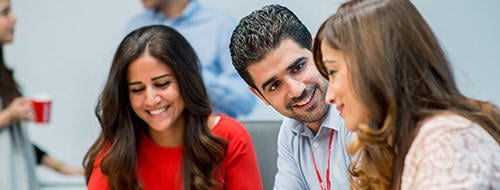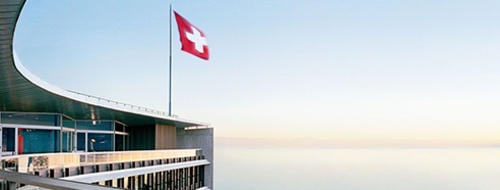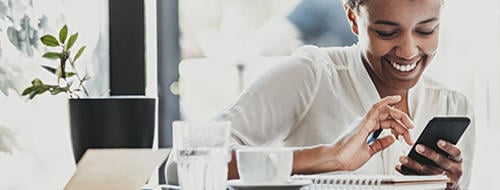This past year, I've had an absolute crash course in all things packaging.
I was studying environmental sustainability when I first joined Nestlé as an intern, but I'd never taken a look at packaging and waste management in detail. Then, overnight, I suddenly had access to experts who've spent decades working on innovations to keep our packaging out of the environment.
This spring, I want more people to get the experience that I have had. So, I've joined forces with Gerhard, our trusty Head of the Nestlé Institute for Packaging Sciences, to 'slice' into three of our packaging materials that have undergone a major transformation in recent years.
Coffee-Mate powder: Paper that packs a punch
What's new: Coffee-Mate powder is among the latest products converting to paper packaging. They're joining others like Maggi bouillon cubes with recyclable paper wrappers, Smarties, and Quality Street.
Why it matters: Using paper material for packaging helps us reduce plastic usage. It can also replace hard-to-recycle multilayer plastic with something that's easier for many consumers to recycle, in the 'paper' bin with their newspaper.
What else: We work hard to source paper products sustainably. Last year, 98.2% of our pulp and paper supply chain was assessed as deforestation-free.
rPET Milo: A bottle made from other bottles
What's new: More and more Nestlé products are using recycled material. This Milo bottle is one example - it uses material that's been used before instead of creating new plastic.
Why it matters: Substituting new plastic for recycled plastic is a big part of our work. We've cut the amount of new plastic we use by 14.9% vs 2018, and that means saving the natural resources that would have been used to produce plastic from scratch.
What else: Part of creating a circular system means having the right recycling infrastructure in place. We support collection, sorting, and recycling infrastructure across 220 initiatives in the countries. For example, in Malaysia, Nestlé joined forces with Petaling Jaya City to launch a door-to-door collection and recycling program. As of the end of 2022, approximately 6 000 metric tons of waste had been collected, sorted, and traded; eliminating nearly all waste going to landfill.
Nesquik reusable: Classic brand meets a new model
What's new: As we work to develop more reusable and refillable packaging options, we have been running a pilot with the start-up Circolution in Germany. Working in several grocery stores, consumers buy Nesquik in standardized stainless-steel packaging that is then returned, cleaned, and reused. We even share this system with local companies in a 'pool' of shared, standardized food packaging.
Why it matters: Changing packaging systems takes major partnership to be able to scale. We're learning together with grocery stores, start-ups, and consumers to find new and innovative ways to use less packaging and stop waste before it starts.
What else: We've run over 20 reuse and refill pilots in 12 countries. In 2023, we also launched a pilot refill vending machine service in Indonesia with Qyos. Consumers can buy Koko Krunch cereal and Milo through a refill vending machine in their grocery store.
Getting the chance to 'cut' into packaging topics with Gerhard was a perfect wrap of my first year at Nestlé. It's like opening a box of chocolates - initially, you see the label, but as you delve deeper, you uncover the treasures within. Across everything that I work on, there's been a big consistent theme: I've shifted my mindset to go beyond face value and dig in. I'm grateful for all the 'behind the scenes' efforts on each brand I grab off the shelf!









